If you’ve ever wanted to go out on the water in your boat, you undoubtedly know how important it is for anchoring systems and bow rollers. Securing anchor to bow roller is a vital step on how to secure anchor to bow roller when out at sea, as strong waves can cause vessels to drift away from where they’re supposed to be if the anchor isn’t fitted securely.
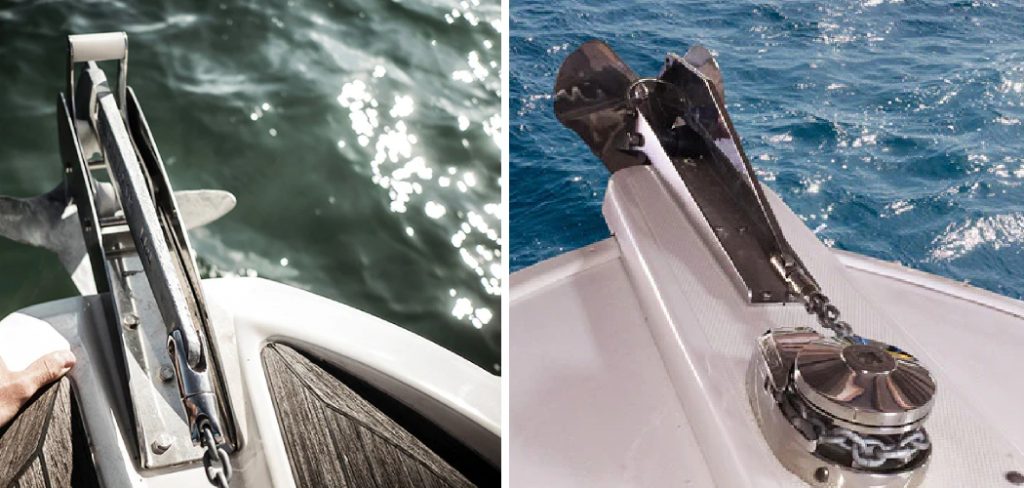
In this blog post, we will review all aspects of ensuring that an anchor is properly secured to a bow roller system. We will discuss some common installation considerations, ways of testing securement strength before going out on the water, troubleshooting issues related to loose anchors after returning from a boating trip, and other key tips for optimal safety when trying this valuable skill. Ready? Let’s get started!
What is a Bow Roller?
A bow roller is a hardware device used for securing the anchor and mooring line to the bow of a vessel. It’s typically made up of two pieces: a base that mounts onto the hull of the boat and an arm-like component that curves outward from the base and helps keep the anchor in place.
What to Consider While Securing Anchor to Bow Roller?
1. The Size
It’s essential to take a few factors into account while securing the anchor to the bow roller. First, always ensure that your vessel has the correct size and type of bow roller for its anchor weight. Too small or too large will not provide enough securement strength for optimal safety.
Next, consider using a backing plate if possible. A backing plate is a piece of metal that’s placed in between the anchor and the roller, which serves to evenly distribute pressure on both components. This can help increase the securement strength of the connection as well as reduce wear and tear over time.
2. The Strength of Connection
The strength of securing the anchor to the bow roller is essential for safety during your boating trips. After installing the anchor, you should always test to ensure that it’s securely attached before heading out on the water. You can do this by applying pressure to the bow with your hand and ensuring that there is no give in the securement points of contact between the roller and anchor.
If you find any looseness or instability, then it’s best to secure the anchor better using additional nuts, bolts, or other fasteners. It’s also a good idea to check for wear and tear on the roller after every outing.
3. Troubleshooting Issues
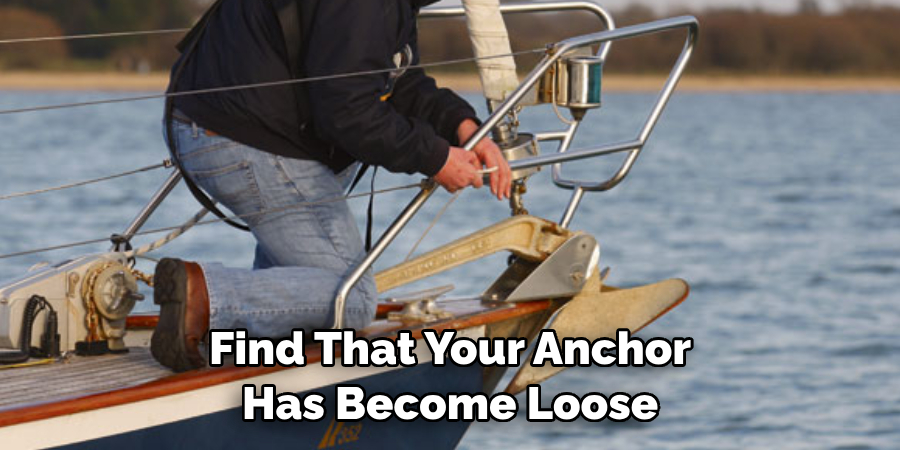
It’s not uncommon to find that your anchor has become loose during a boating trip. This can be caused by strong wave action or other environmental factors. If this happens, it’s important not to panic and instead take action to fix the issue as soon as possible.
One way of doing this is to use a screwdriver to tighten the anchor in its current position on the bow roller. Make sure you don’t overtighten, though, as this can cause the anchor to come loose again. If needed, use additional fasteners to increase securement strength.
Required Items for Securing Anchor to Bow Roller
Before setting off on a voyage, make sure that you have all of the necessary items onboard for securing the anchor to the bow roller. This includes:
- Appropriately sized and type of bow roller
- Backing plate (if needed)
- Nuts and bolts or other fasteners
- Screwdriver
- Wrench
Having all of these items readily available will ensure that you’re able to securely anchor your vessel wherever you go.
How to Secure Anchor to Bow Roller in 10 Steps
Step 1: Install the Roller
Install the bow roller on the hull of your vessel as per the manufacturer’s instructions. Also, make sure to use the correct size and type of roller for your anchor weight.
Step 2: Place Backing Plate (if needed)
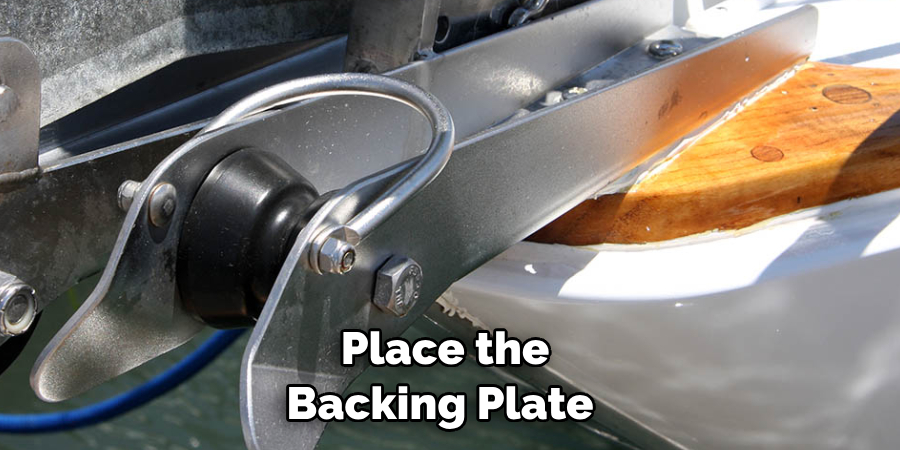
If applicable, place the backing plate in between the roller and anchor before tightening any fasteners. This will help distribute pressure evenly and increase securement strength.
Step 3: Secure Anchor to Roller With Fasteners
Using the appropriate size and type of fastener, secure the anchor to the roller. This can either be done with nuts and bolts or other types of fasteners (such as screws).
Step 4: Tighten Fasteners
Tighten all of the fasteners securely, but don’t overtighten. Tightening too much can cause the anchor to become loose during a voyage. Also, ensure that the anchor isn’t shifted during this process.
Step 5: Test Securement Strength
Before heading out on the water, test the securement strength of the roller and anchor connection with your hand. Apply pressure to the bow and make sure that all points of contact are firmly secure.
Step 6: Prepare Necessary Tools
Make sure that you have all of the necessary tools onboard for any troubleshooting issues during your voyage. This includes a screwdriver, wrench, and additional fasteners, just in case.
Step 7: Set Sail
Now that everything is ready to go, set sail and enjoy your time out on the water!
Step 8: Check Anchor
Once you’re done boating, take the time to check your anchor and roller system. Make sure that everything is still secure and that there are no signs of wear or tear.
Step 9: Make Necessary Adjustments
If any adjustments need to be made (such as tightening bolts or using additional fasteners), do so as soon as possible.
Step 10: Store Tools Properly
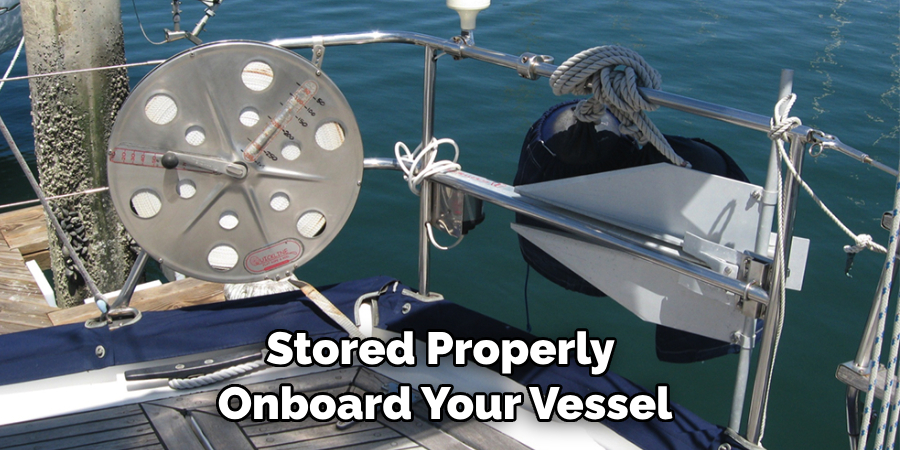
Finally, make sure that all of the tools used for securing anchor to bow roller are stored properly onboard your vessel. This will ensure that they’re always available and in good condition when you need them.
Following these steps on how to secure anchor to bow roller will help you to securely anchor your vessel in any waterway. Just remember to always take the time to check and test before heading out on the open sea!
8 Common Mistakes to Avoid
When securing an anchor to a bow roller, there are some common mistakes that people make that can lead to serious damage. Here are eight key tips on how to secure your anchor correctly and safely.
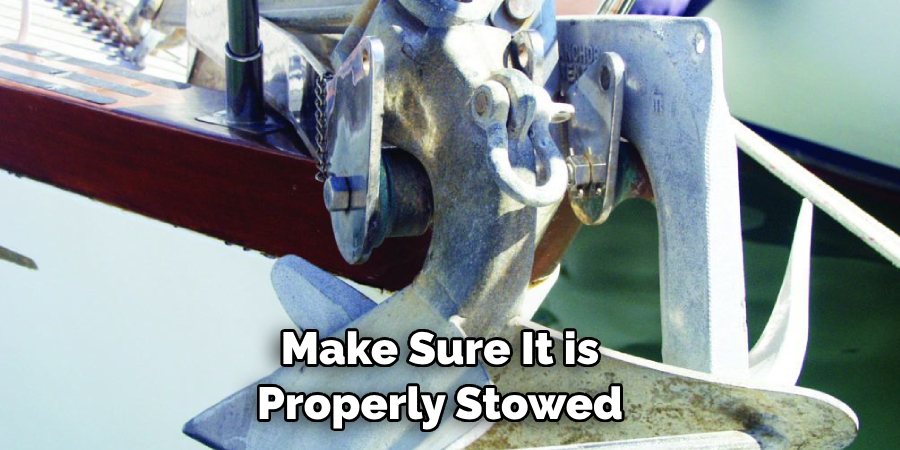
- Make sure the anchor is properly prepared for installation. Inspect it prior to attaching it to the bow roller and make sure all parts are in good condition and that there are no sharp edges that might cause damage to the boat or your hands.
- Before you attach an anchor line to the bow roller, make sure it is properly stowed so that it will not snag or tangle when deployed. This is important for both safety and efficiency.
- Make sure the bow roller can handle the weight of the anchor and line. If not, it could break or be damaged by the weight of the anchor and line.
- Make sure that there is sufficient space between the bow roller and any other objects on deck for ease of deployment and retrieval. Otherwise, you may risk entangling your line in something else on deck.
- When attaching the anchor line to the bow roller, make sure it is done securely. The line should be tight so that there is no slack in the line, and it should be secured using a knot or tie-down device.
- Do not use any sharp edges when attaching an anchor rope to the bow roller, as these may cause damage to your boat or your hands. Also, make sure the rope is made of a material that can withstand wear and tear.
- Make sure that the anchor line is not too long, as this could lead to tangles when deploying and retrieving your anchor. It should be just long enough for you to easily manage it without getting tangled in other objects on deck.
- When securing your anchor line to a bow roller, make sure the line is in good condition and not frayed or worn. If it is, replace it before use, as this could lead to serious damage.
By following these simple steps on how to secure anchor to bow roller you can ensure that your anchor is securely attached to your boat’s bow roller and will stay safely in place while deployed. Knowing how to properly secure an anchor to a bow roller can help ensure that your boat is ready for whatever adventures you have planned.
8 Safety Precautions to Follow When Securing an Anchor to a Bow Roller
An anchor is a crucial safety feature for any vessel, so it’s important to take the necessary steps to ensure your anchor is secure when out at sea. Here are eight key safety precautions you should follow when attaching an anchor to a bow roller:
- Inspect the equipment before and after each anchoring session. Make sure that the bow roller is intact and secure before attaching your anchor to it.
- Use the right size of rope for anchoring. The rope should be strong enough to withstand heavy wind and tidal forces while being anchored, so make sure it’s compatible with your boat’s weight class.
- Tie a stopper knot at the end of the rope to create a loop. This will help reduce chafing and make it more difficult for the anchor line to slip off the bow roller.
- Secure the anchor shank with a locknut or snatch block. This ensures that your anchor won’t come loose while at sea and is an essential safety precaution.
- Anchor in friendly waters or at least have an experienced person on board to help you while anchoring. It’s also important to check the weather conditions, as strong winds or storms can make anchoring more risky.
- Use a marker buoy when anchoring in inconspicuous areas, and keep your anchor line taut throughout the entire operation. Use the marker buoy to help you find and retrieve your anchor when needed.
- Choose a suitable anchoring spot with deep water and a good holding bottom. Make sure that the area is free from any obstacles or hazardous objects that could get entangled in the rope.
- Monitor the anchor line periodically while you are anchored to make sure it is still secure. Stay alert and be prepared to move the boat if necessary.
By following these safety measures, you can ensure that your anchor is securely attached to your bow roller and ready for any adventure on the open seas!
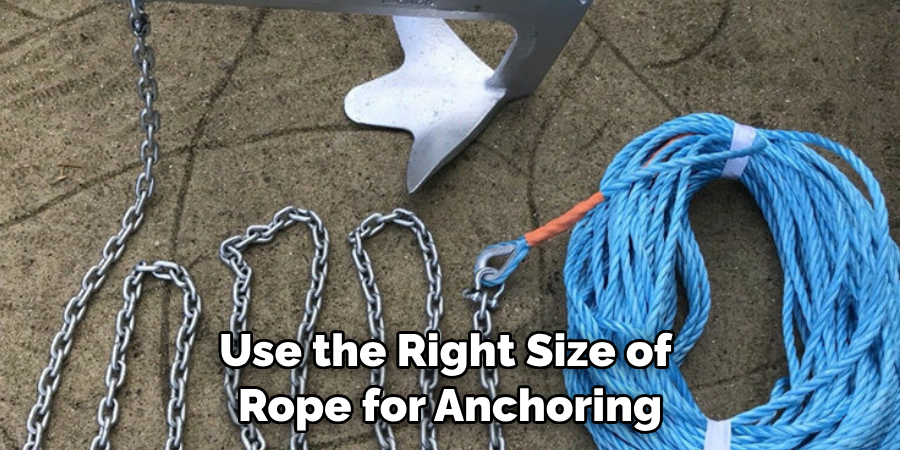
Frequently Asked Questions
How Long Will It Take?
Securing your anchor to the bow roller is not a difficult task. Depending on the type of boat you have, it can take as little as 15 minutes up to an hour or more, depending on how well-prepared you are and what kind of rigging needs to be done. However, it’s important to note that if you don’t secure your anchor properly, it can cause serious damage to your boat and possibly even put you in danger.
How Can I Prepare for the Job?
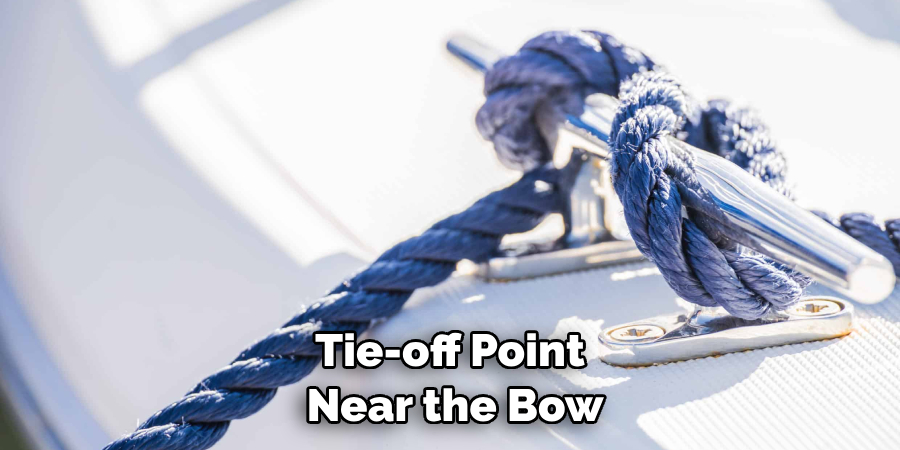
Before starting the job, make sure that you have all of your necessary tools and supplies ready. You’ll need a length of rope or chain, depending on the size and weight of your anchor, as well as a bow roller and any other necessary hardware. Additionally, you’ll want to make sure that there is a cleat or tie-off point near the bow of your boat so that you can secure your anchor line once it’s attached.
Conclusion
The assembly of a bow roller is an essential task to ensure safe sailing. With the right tools and instructions, this process can be simple and straightforward for all skill levels. Make sure to always check the manufacturer’s instructions first as they may provide specific details to guide your task.
Anchoring your boat securely is necessary for safety and security while out on the water – with the right methods, techniques, and steps outlined in this article, you can rest easy knowing you have done everything possible to keep your boat safely anchored. Take time to triple-check all your equipment one last time before heading out on your next adventure, and you will be one step closer to peacefully cruising over the waves. So don’t wait any longer – take control of your boat anchoring success with these steps on how to secure anchor to bow roller today!
About
Safety Fic is a distinguished figure in the world of Diy design, with a decade of expertise creating innovative and sustainable Diy solutions. His professional focus lies in merging traditional craftsmanship with modern manufacturing techniques, fostering designs that are both practical and environmentally conscious. As the author of diy, Safety Fic delves into the art and science of Safety Fic-making, inspiring artisans and industry professionals alike.
Education RMIT University
(Melbourne, Australia) Associate Degree in Design (Safety Fic) Focus on sustainable design, industry-driven projects, and practical craftsmanship. Gained hands-on experience with traditional and digital manufacturing tools, such as CAD and CNC software.
Nottingham Trent University
(United Kingdom) Bachelor’s in diyfastly.com and Product Design (Honors) Specialized in product design with a focus on blending creativity with production techniques. Participated in industry projects, working with companies like John Lewis and Vitsoe to gain real-world insights.
Publications and Impact
In diy, Safety Fic his insights on indoor design processes, materials, and strategies for efficient production. His writing bridges the gap between artisan knowledge and modern industry needs, making it a must-read for both budding designers and seasoned professionals.
